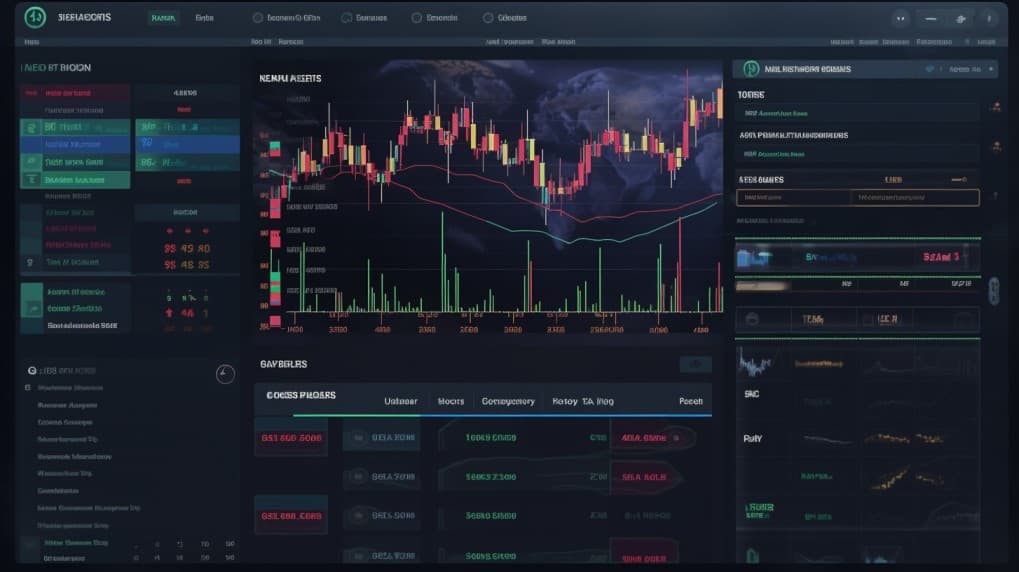
What is the USPX ETF?
USPX ETF: Overview
In the realm of finance, Exchange-Traded Funds (ETFs) have emerged as versatile investment vehicles that offer exposure to a diversified portfolio of assets. One such ETF that has gained prominence is the USPX ETF. As an investor, it's crucial to understand the key aspects of this financial instrument to make informed decisions about your investment strategy.
USPX ETF: Exploring Its Composition
The heart of any ETF lies in its composition, and the USPX ETF is no exception. Under normal market conditions, this ETF allocates at least 80% of its assets to the component securities of the Underlying Index. This index, managed and calculated by Morningstar, Inc., is designed to reflect the performance of a specific market segment. In the case of the USPX ETF, the Underlying Index consists of large- and mid-capitalization stocks that represent a significant portion of the investable universe within the U.S. equity market.
The USPX ETF emphasizes a passive or indexing investment approach. This approach seeks to closely replicate the performance of the Underlying Index before accounting for fees and expenses. The ETF may employ one of two strategies: replication or representative sampling. While replication aims to mirror the exact composition of the Underlying Index, representative sampling seeks to capture a representative subset of its component securities. This distinction is particularly relevant when considering market conditions that may hinder exact replication.
[Image_placeholder]
USPX ETF: Enhancing Performance with Financial Instruments
To optimize performance and tracking, the USPX ETF employs various financial instruments, such as equity futures and equity total return swaps. These tools provide opportunities to add value and align the ETF's performance more closely with that of the Underlying Index. Equity futures and total return swaps are utilized to equitize cash, simulate investments in the Underlying Index, facilitate trading, and minimize transaction costs. These instruments enable the ETF to maintain liquidity while effectively gaining exposure to the equity market.
[Image placeholder]
USPX ETF: Strategic Concentration and Industry Exposure
Diversification and concentration play pivotal roles in investment strategies. The USPX ETF strategically allocates its investments in accordance with the concentration of the Underlying Index. For instance, if the Underlying Index is concentrated in a specific industry, the USPX ETF aims to mirror this concentration. As of May 31, 2023, the Underlying Index was concentrated in the technology sector. Consequently, the USPX ETF also holds a significant portion of its net assets within this industry.
Conclusion:
In the dynamic world of finance, understanding the intricacies of financial instruments like the USPX ETF is essential for making sound investment decisions. By comprehending its composition, strategies, and industry exposure, investors can better align their portfolios with their financial goals. However, it's important to remember that this article does not provide investment advisory services.
Disclaimer: This article is intended for informational purposes only and does not offer investment advice or recommendations. Always conduct thorough research and consider consulting a financial advisor before making investment decisions.
USPX ETF issuer
USPX ETF official page
USPX quote and analysis
Discover the top holdings, correlations, and overlaps of ETFs using our visualization tool.
Our app allows you to build and track your portfolio.
To learn more about the USPX Franklin U.S. Equity Index ETF, access our dedicated page now.
FAQ
What is the USPX ETF?
USPX ETF, is an exchange-traded fund that provides investors with exposure to companies operating in the relevant sector.
What is the underlying index that the USPX ETF aims to track?
USPX ETF aims to track the performance of a specific index, which includes companies involved in various aspects of the relevant industry.
What types of companies are included in the USPX ETF?
USPX ETF includes companies from the relevant industry, which may consist of specialized firms, equipment manufacturers, and other related entities.
How does the USPX ETF work?
USPX ETF functions by pooling investors' capital to purchase a diversified portfolio of related stocks, aiming to replicate the performance of the underlying index.
What are the advantages of investing in the USPX ETF?
Investing in the USPX ETF offers exposure to a specialized sector with potential for growth and innovation. It allows investors to diversify within the industry, which could experience significant advancements and expansion in the future.